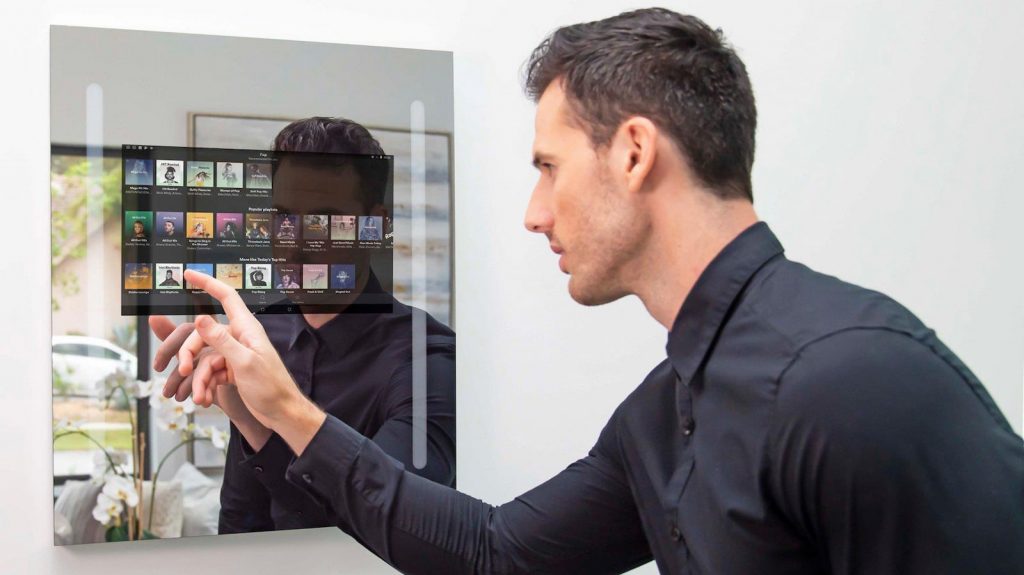Market Review
The smart mirror market is expected to grow at a CAGR of 12.25% per year from 2019 to 2025. Due to their unique properties, smart mirrors find their way into many end-user verticals. However, only applications found in automotive and retail can be a great source of demand for smart mirrors in the current market scenario.
The surge in the adoption of advanced driver assistance systems (ADAS) in the automotive sector, the rise in demand for connected devices, and the shift towards digital stores in retail are the main drivers of the smart mirror market. However, high costs and privacy concerns are some of the factors hindering the growth of the market.

According to the US Department of Commerce, global retail sales in 2020 are estimated at $27.7 trillion, an increase of $1.4 trillion from the previous year. With sales growth and other factors such as rapidly changing demographics, increasing disposable income, lifestyle changes leading to increased adoption of smart homes will create profitable growth in the smart mirror market.
Due to the recent shutdown of businesses globally, the impact of the Coronavirus is expected to negatively impact the smart mirror market as the prices of used components may increase over time due to lack of production and loss incurred by manufacturers in a few months.
Report scope
A smart mirror is a digital mirror that uses advanced technology such as sensors, cameras, displays, and connectivity hardware. These mirrors are mainly used in various industries such as automotive, retail, housing, healthcare and others.
Key Market Trends
- Significant growth in the automotive sector is expected
- The main drivers of the smart mirror market are comfort and safety. It provides security by tracking the vehicle when needed. The biggest benefit of a smart mirror in the automotive sector is the reduction in traffic accidents as a result of a safer driving environment.
- This smart mirror technology has features such as self-dimming, self-cleaning, self-healing, etc. The key limitations of this technology are its technical disadvantages such as memory loss, faulty sensors, etc.
- The assembly of smart mirrors, such as sensors, display, camera, connectivity and audio systems, which are more expensive than products offered in the software or services segments, and with the growth of these hardware components, the growth of smart mirrors. will also increase in the future.
- Demand for smart mirrors in the automotive sector will grow as energy standards rise. Its variable light transmission property along with voltage, heat and light changes has made it more profitable in the automotive sector. This feature also helps to meet national energy efficiency standards by reducing heating, lighting and air conditioning costs.
- For example, in June 2019, the Passenger Car Fuel Efficiency Standards Board set new energy standards and targets for passenger cars to improve their fuel efficiency by 32.4% over fiscal 2016 sales. As a result, the automotive industry has been faced with a shift away from conventional eyeglasses towards smart mirrors and eyeglasses.

Europe is expected to hold the largest market share
- The widespread adoption of smart mirrors in the automotive, retail and consumer segments is the main driver of market growth in these regions. The growing focus on pleasant and convenient shopping experiences for customers in the retail sector in order to increase customer retention is one of the main factors driving the growth of the smart mirror market in this region. However, the continuous dynamic growth of online retail may slow down the growth of physical retail stores, which will negatively affect the smart mirror market.
- The growing availability of various voice assistants, the introduction of artificial intelligence into several smart home devices, and the rapidly growing demand for IoT-enabled smart devices are factors that are expected to drive the growth of the smart mirror market in the region.
- Companies in the region are focusing on delivering customer-centric products when it comes to devices such as smart mirrors, innovating and incorporating technologies such as augmented reality, machine learning, and voice and touch recognition into these mirrors. This will enable smart mirror vendors to serve more customers with different needs.
- For example, CareOS’ Artemis European smart mirror is equipped with cameras that can recognize faces. The mirror can be controlled by voice and use augmented reality so that users can virtually try on different hairstyles or makeup. It also offers tutorials on various ways to apply beauty products.
